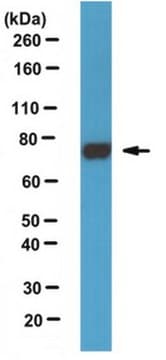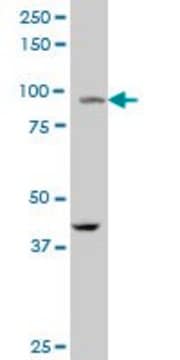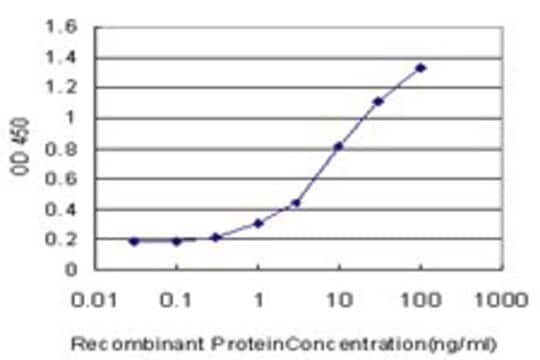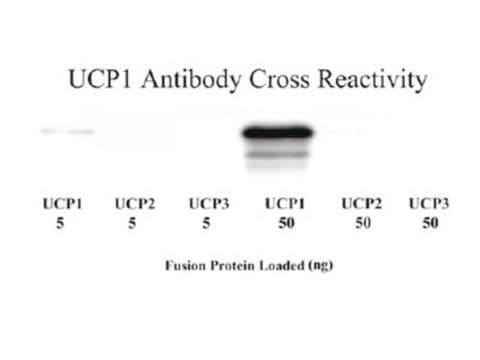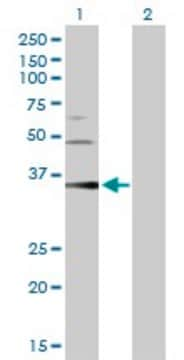AB3242
Anti-PGC-1 Antibody
Chemicon®, from rabbit
Synonyme(s) :
Peroxisome proliferator-activated receptor gamma coactivator 1-alpha, Ligand effect modulator 6, PGC-1-alpha, PPAR-gamma coactivator 1-alpha, PPARGC-1-alpha
About This Item
Produits recommandés
Source biologique
rabbit
Niveau de qualité
Forme d'anticorps
affinity isolated antibody
Type de produit anticorps
primary antibodies
Clone
polyclonal
Produit purifié par
affinity chromatography
Espèces réactives
mouse, rat, human
Fabricant/nom de marque
Chemicon®
Technique(s)
ELISA: suitable
immunocytochemistry: suitable
immunofluorescence: suitable
immunohistochemistry: suitable
immunoprecipitation (IP): suitable
western blot: suitable
Numéro d'accès NCBI
Numéro d'accès UniProt
Conditions d'expédition
dry ice
Modification post-traductionnelle de la cible
unmodified
Informations sur le gène
human ... PPARGC1A(10891)
Description générale
Spécificité
Immunogène
Application
α Longev. Healthspan. 2(1):13; Matsuura, T., et al. (2007). J. Orthop. Res. 25(11):1534-1540).
Analyse par immunohistochimie : α
α Cell Rep. 14(9):2068-2075; Park, R.D., et al. (2014). J. Exerc. Nutrition Biochem. 18(1):1-7; Kim, J.S., et al. (2014). J. Exerc. Nutrition Biochem. 18(3):259-266; Philip, A., et al. (2011).
α J. Sports Sci. Med. 14(3):548-555; Lee, I., et al. (2015). Front. Pharmacol. 6:43; Vincent, G., et al. (2015). Front Physiol. 6:51; Lombardi, A., et al. (2015). PLoS One. 10(2):e0116498; Gouspillou, G., et al. (2014). FASEB J. 28(4):1621-1633; Saleem, A., et al. (2014). Am. J. Physiol. Cell Physiol. 306(3):C241-249).
Épigénétique et fonction nucléaire
Facteurs de transcription
Qualité
µ Immunogen peptide blocking completely blocked target band detection.
Description de la cible
Forme physique
Stockage et stabilité
Remarque sur l'analyse
Informations légales
Clause de non-responsabilité
Not finding the right product?
Try our Outil de sélection de produits.
Code de la classe de stockage
12 - Non Combustible Liquids
Classe de danger pour l'eau (WGK)
WGK 2
Point d'éclair (°F)
Not applicable
Point d'éclair (°C)
Not applicable
Certificats d'analyse (COA)
Recherchez un Certificats d'analyse (COA) en saisissant le numéro de lot du produit. Les numéros de lot figurent sur l'étiquette du produit après les mots "Lot" ou "Batch".
Déjà en possession de ce produit ?
Retrouvez la documentation relative aux produits que vous avez récemment achetés dans la Bibliothèque de documents.
Les clients ont également consulté
Notre équipe de scientifiques dispose d'une expérience dans tous les secteurs de la recherche, notamment en sciences de la vie, science des matériaux, synthèse chimique, chromatographie, analyse et dans de nombreux autres domaines..
Contacter notre Service technique
